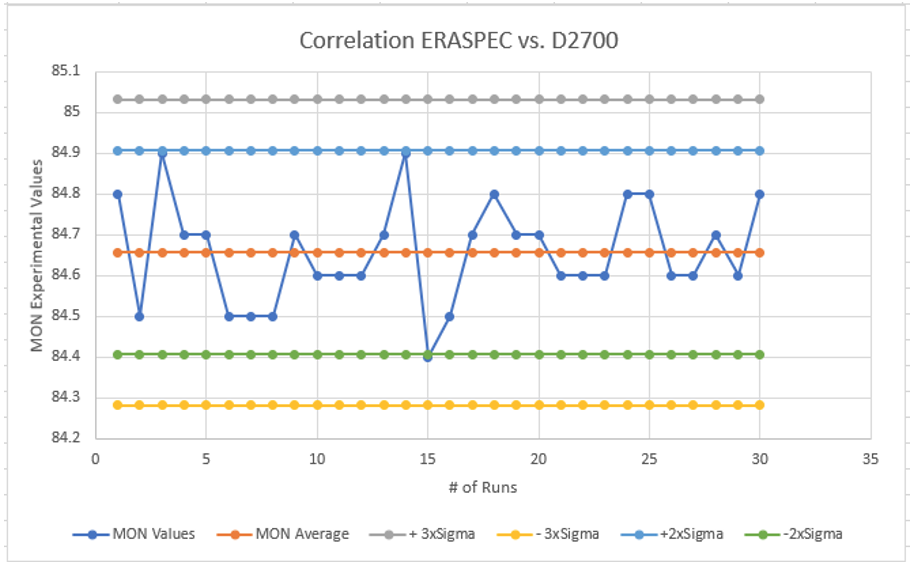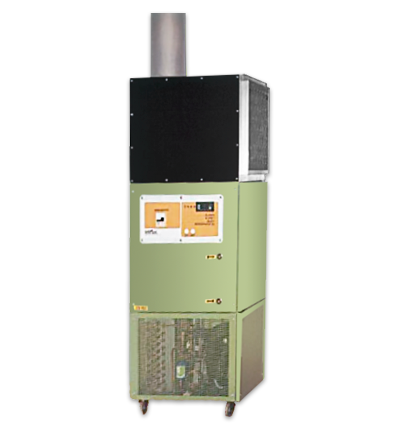ASTM D2699/D2700
Standard Test Method for Research and Motor Octane Number of Spark Ignition Fuels
The ASTM D2699 and D2700 methods cover the quantitative determination of the knock rating of liquid spark-ignition engine fuels in terms of Research Octane Number and Motor Octane Number fuels.
The Octane Number scale lies in the range from 0 to 120 but both of these methods have a working range from 40 to 120 Octane Number. The fuels are tested in a standardized, single cylinder, four-stroke cycle, variable compression ratio carbureted CFR engine which is run in accordance with a set of operating conditions to reflect both types of driving conditions: City severe conditions characterized by low speeds and frequent stops (Research Octane number (RON) and high speed highways mild driving conditions Motor Octane Number (MON).
“The increase of spark ignition engines and automobile circulation globally has created an ever-growing government regulatory bodies with a major concern: gas emissions or put in other words: pollution. The big aim to reduce pollution has implicated in principle the compositional changes to fuels to reduce emissions without compromising the vehicles performance. The world started to see the first changes in the phase out of lead and benzene and step increases of ethanol and other oxygenates to mainly reduce carbon monoxide emissions. EPA concurrently implemented gasoline volatility regulations since a reduction in vapor pressure also contributes to emission reduction especially in summer. Another important step of the Clean Air Act to reduce emissions include the sulfur reduction down to 10 ppm average concentration and 80 ppm max.
Other changes in the Tier III new Reformulated Gasoline deals with Anti Knock Index the average value of RON and MON currently being regulated to a minimum of 87 Octane Number.”
Referenced Standards
ASTM Standards:
D1193Specification for Reagent Water
D1744 Test Method for Water in Liquid Petroleum Products by Karl Fischer Reagent
D2268 Test Method for Analysis of High-Purity n-Heptane and Isooctane by Capillary Gas Chromatography
D2360 Test Method for Trace Impurities in Monocyclic Aromatic Hydrocarbons by Gas Chromatography
D2699 Standard Test Method for Research Octane Number of Spark-Ignition Engine Fuel
D2700 Standard Test Method for Motor Octane Number of Spark-Ignition Engine Fuel
D2885 Test for Determination of Octane Number of Spar-Ignition Engine Fuels by On-line Direct Comparison Technique
D3703 Test Method for Peroxide Number of Aviation Turbine Fuels
D4057 Practice for Manual Sampling of Petroleum and Petroleum Products
D4175 Terminology Related to Petroleum, Petroleum Products and Lubricants
D4177 Practice for Automatic Sampling of Petroleum and Petroleum Products
D4814 Specifications for Automotive Spark-Ignition Engine Fuels
D5842 Practice for Sampling and Handling of Fuels for Volatility Measurements
E 1 Specifications for ASTM Liquid-in-Glass Thermometers
E 456 Terminology for Relating to Quality and Statistics
E 542 Practice for Calibration of Laboratory Volumetric Apparatus
ANSI Standards:
C-39.1 Requirements for Electric al Analog Indicating Instruments
Energy Institute Standards:
IP 224/02 Determination of Low Lead Content of Light Petroleum Distillates by Dithizone Extraction and Colorimetric Method
Summary of Test Method
The Research and Motor Octane Number or in general the Antiknock rating of a spark-ignition engine fuel is measured in single-cylinder stationary laboratory engines operated according to specific conditions of standard test methods D2699 (RON) and D2700 (MON). These single-cylinder procedures utilize the same variable-compression-ratio engine (see Fig. 1 for a general description). RON operates at 600 rpm, whereas MON operates at higher speed of 900 rpm and a higher mixture inlet temperature. The procedures relate the knocking characteristics of a fuel being tested to defined standard fuels, typically blends of 2,2,4-trimethyl pentane (iso octane) and n-heptane which are called Primary Reference Fuels (PRF).
Significance and Use
Research Octane Number and Motor Octane Number correlate with commercial spark-ignition engine antiknock performance under mild and severe conditions of operation. By definition RON and MON for isooctane is 100 ON and for n-heptane is 0 ON. For most engines and operating conditions, the antiknock performance of a fuel will be reflected in the RON value. MON is a better indicator of antiknock rating at full throttle that is high engine speeds at higher intake air temperatures. An overall performance value is defined as the Antiknock Index (AKI) which is the average value of RON and MON i.e. AKI = (RON + MON)/2. The “Sensitivity” is known as the difference between RON and MON for a particular fuel. According to the latest data in United States commercial fuels average a 9 units for unleaded regular gasoline and 10 units for premium grade.
Apparatus
A standardized single cylinder, four-stroke cycle variable compression ratio carbureted CFR engine shown in Fig.1 is used in both methods discussed in this document.
One of the critical operating conditions of the test is the air intake temperature. It is very difficult to condition the air for the mixture with the test fuel in terms of clean free of interfering particles, dry and at the exact temperature and pressure as required by the standard test methods discussed.

Figure 1. Single cylinder CFR Machine for RON and MON measurements
Rofa has manufactured a cooling tower EAW 2210 shown in fig.2 as an efficient replacement of the traditional ice tower described in D2699 and D2700.

Figure 2. Cooling Tower Model EAW 2210 for CFR Octane Machine
Quality Control Checks
A method used for quality control in fuel blending normally at a refinery is described in ASTM/D2885 and its IP version IP 360. Confirm the instrument is in statistical control at least once a week when it is in use, by analyzing a quality control (QC) sample that is representative of samples typically analyzed. Analysis of a single QC sample can be sufficient. Analysis of QC sample results can be carried out using control chart techniques.
Procedure
The injection of the air-fuel sample occurs according to the steps described in both D2699 and D2700 standard test methods. Please read sections 9 through 15 for engine preparation and procedures.
Report
In reporting care should be taken to specify the calculated bracketing procedure or C.R. procedure as the RON measured.
For ratings should be reported according to the scales below 72.0, from 72.0 to 103.5 and above 103.5.
Finally report the procedure used, the room barometric pressure at the time of rating and the IAT used.
Precision and Bias
The precision of the methods is based on RON values of 90 to 100 ON based on statistical examination obtained by statistical examination of interlaboratory test results at the corresponding test conditions.
Repeatability —The difference between two single and independent results, obtained by different operators working in different laboratories on identical test material, would in the long run, in the normal and correct operation of the test method, exceed the following values of 0.6 Octane Number only in one case in twenty for D2700 and 1.0 Octane Number for conditions of D2699.
Reproducibility —The difference between two single and independent results, obtained by different operators working in different laboratories on identical test material, would in the long run, in the normal and correct operation of the test method, exceed the following values of 0.7 O.N only in one case in twenty for D22699 and 2.0 Octane Number for conditions of D2700. See current version of the standards for more details.
Bias — The procedures in these test methods for MON and RON of spark-ignition engine fuel have no bias because the values of RON and MON can only be defined in terms of these test methods. However, the experimental values of typical engine fuels correlate very well with alternate methods like the Eraspec FT-IR spectroscopy manufactured by Eralytics as illustrated in the two graphs of gasoline of certified 97 RON and 84 MON values.
sd
Figure 3. Correlation between CFR RON and Eraspec FT-IR

Figure 4. Correlation between CFR MON and Eraspec FT-IR





